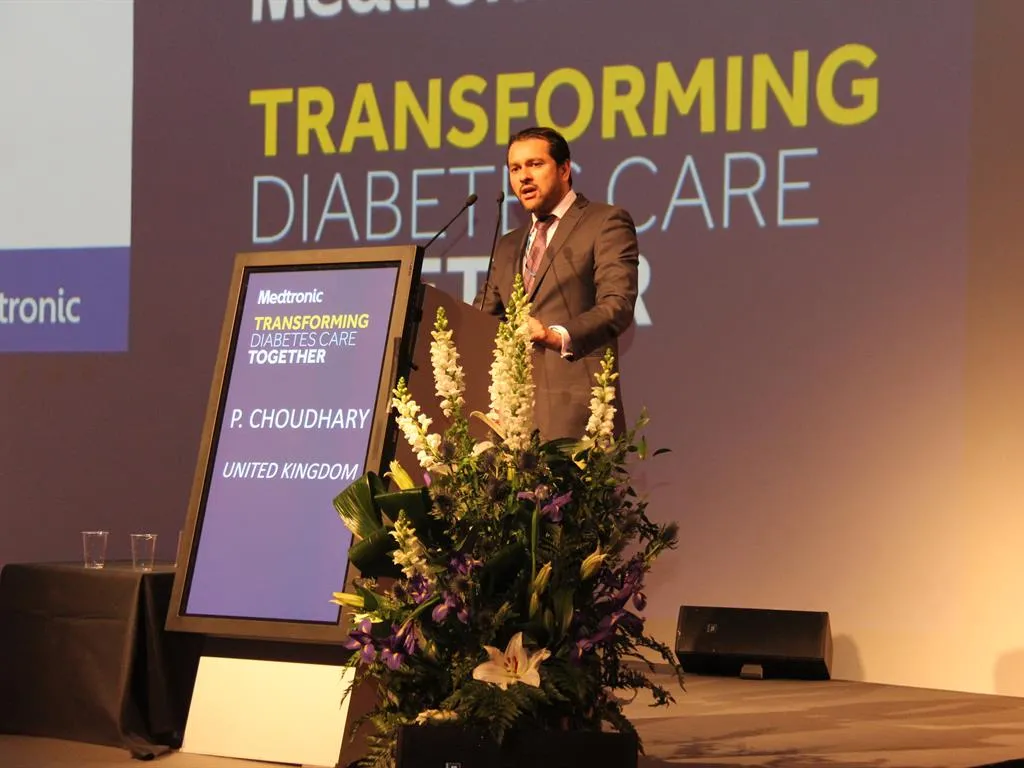The International Conference on Technologies for Diabetes, held in Paris, puts on the table the growing importance of connected sensors and devices to improve the quality of life of diabetics.
At the moment, diabetes does not have - no one is expected - a cure, so the main efforts of the medical industry go through improving the quality of life of those who suffer and avoid the effects associated with this disease, which goFrom overweight to death.
Innovations that we have been able to see first hand in Paris, during the tenth international conference on technologies and advanced treatments for diabetes (ATTD 2017).
In this fair, doctors, scientists, start -ups and pharmaceutical firms have gathered in order to show the latest in insulin analogues, new supply systems, insulin pumps, glucose sensors, devices for diabetic prevention or artificial pancreas.
One of the gadgets that attracted more interest in the ATD 2017 was free freeyle, a glucose meter developed by ABBott that allows you to record blood sugar levels without the need to prick your finger, quickly and discreetly.The system uses a small sensor that is placed on the skin of the diabetic, inserting a fine sheet of less than five millimeters in the body.
This device is subject - even under water or when doing sports - and is necessary for 14 days, after which it must be replaced.
To read the results, the patient should only bring an NFC reader to the sensor, even on clothes.Thus all measurements are collected, both the current and an eight -hour history.
Data that can later be sent to a computer or a smartphone to establish trends and analyze more variables that allow optimizing insulin doses, patient feeding and habits to avoid crisis of hypoglycemia and hyperglycemia.
Until now, similar teams had failed because of their inaccuracy against the traditional strips analysis.However, Abbott has brought studies to ATD 2017 that demonstrates how the relative deviation against traditional meters barely exceeds 11%;99.7% of the results are included in an optimal margin, both in adults and in pregnant women.

The device is already used by 200,000 patients throughout Europe.And that despite the fact that it is not covered by most public health systems, including Spanish.Thanks to the help of Freestylelibre, they have achieved a reduction of up to 60% in hypoglycemia peaks.
The next step, as innovative Joelgoldsmith, Head of Innovation at Abbott Diabetes Care, is to eliminate the wireless reader and make a simple and comfortable mobile 'app' can recognize the sensor measurements.Also, ABBOTT is in conversations with insulin pump manufacturers to connect this monitoring system to another that delivers the ideal insulin dose to the patient.
In fact, the other great name of ATD 2017 has been Medtronic, one of the fashion companies in this convergence of technology and health, with insulin bombs as a flag of the company.In that sense, this week an agreement between this company and the Multinational Roche has been made public to develop a glycemia meter based on Bluetooth Low Energy (BLE) connectivity, which will communicate with future Medtronic Insulin pump systems.
'start-ups'
Together with the great firms, they also congregate more and more 'start-ups' specialized in dealing with the effects and chores that diabetes imposes on those who suffer.This is the case of Sugar Sleuth, an app that facilitates theUnderstanding the causes of variations in glucose levels to educate patients in the best health habits.
Others such as Diatrends Biotech bet on the interconnection of Big Data and artificial intelligence to train diabetics, while others such as Swedish Ilya Pharma has specialized in biological drugs to accelerate the healing of wounds.
In the field of monitoring we find original proposals such as Jupiterdevices, which uses a non -invasive technology of high -resolution microwave spectroscopy to detect glucose levels.In turn, Ther Nova is an American start-up that has managed to develop an intraperitoneal artificial pancreas.
from and for the patient
"It is key to involve patients in innovation in diabetes, because we are the ones who suffer its consequences and we can better portray the needs we have," said Gerard Raymond, director of the French Diabetics Federation.
«The patient's vision is capital.If companies do not make it their own, they can never lower blood glucose levels ».
Since the entity they have also demanded that the Gallic Government ("something deaf on these issues") to bet on the new devices and techniques, facilitating its inclusion in the public health system.
Big Data
During the ATD 2017 held in Paris, one of the most eccentric presentations - but not less accurate - was embodied by the always provocative of Laurent Alexandre, president of Dnavision and author of 'The Death of Death'.In his speech, the visionary has thrown a jug of cold water on biotechnological research in diabetes to claim, at the same time, the growing role of data analysis in the lives of patients in this disease.
«The next diabetes revolution will come for the data, not by medical treatments.There is no new treatment for years, none is being created right now.A pill will not appear that we take to breakfast, such as cholesterol, that heals the disease ... at least not in the next five years, ”he explained.
"The scope of genomics, stem cell research and nanotechnology has been overestimated, while the power of information was underestimated to avoid the dramatic effects of diabetes on our bodies."
For Laurent Alexandre, “doctors are not yet aware of how artificial intelligence will be the great medical revolution, while the rest of the investigations will continue to disappoint us, at least until the 2035end manage to take off ».
And if doctors do not understand the new scenario in which we move, the authorities even less, “the regulation is late, governments are not accustomed to regulating clinical information actively for the patient or controlling the devices that generate and processthat data ».





